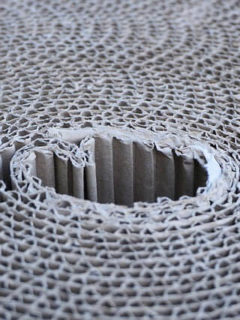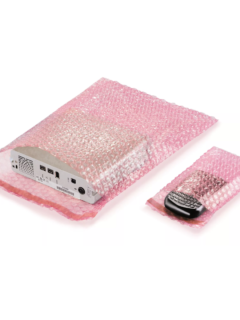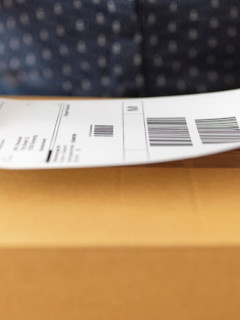The transportation of goods around the world is carried out using airlines as well as the maritime fleet. While air transport does not generate additional risk of damage to parcels, sea transit does. During a journey of up to several days by ship, shipments are exposed to water and moisture. How, then, can you have your goods transported by sea to avoid the risk of damage? Find out how to secure shipments sent by sea.
Parcels sent by sea – are they safe?
When it comes to the transit of goods internationally using sea freight by ship, parcels are exposed to many adverse factors. All shipments sent by sea, which contain food, sensitive electronics, clothing and other materials that can be damaged, should be properly secured.
The most common factors that generate a high risk of damage to the contents of transported shipments are:
- moisture resulting from elevated humidity,
- exposure of parcels to sea salt,
- mechanical damage caused by impacts of the parcel, e.g. against the walls of the transport container,
- extremely fluctuating temperatures – high and low,
- numerous shocks and vibrations,
- changes in pressure.
These are the basic parameters that directly affect the safety of every parcel sent by sea. Not every transport route involves the risk of all factors. Much depends on the time of year, the destination of the waterborne transport, and the way in which the unitised parcels are stored.
On large container ships, they are most often stored in specially prepared containers, although these never guarantee perfect sealing and protection of the parcels from adverse external factors.
Transporting goods by sea – how does the process work?
Looking for more information on how to prepare shipments sent by sea to customers? Our guide will help you understand the importance of the security of goods enclosed in shipments. You will also find out, which transport pallets to choose when ordering international transit by sea.
There is no doubt that shipping by sea is the most common way of transporting goods on a mass scale. A few steps to help you prepare your goods for shipment by container transport are:
- Determine the weight and dimensions of the shipment. These are important parameters that affect the total cost of transporting a consignment by sea, and also translate into the methods used to secure parcels.
- Selecting the right packing materials. If you know that the consignment will be transported on a container ship, it is essential to ensure that it is properly protected, for example from the effects of water and moisture.
- Sealing the goods in corrugated cardboard boxes designed for goods transport. This step in the preparation of parcels sent by sea is slightly more complicated. You will find more information on the procedures for packing items for sea transport later in this article.
- Handing over the parcels into the hands of the carrier, who will take care of transporting, loading and unloading the goods from the container ships.
This is a simple description of what transporting a parcel sent by sea looks like in practice. Of course, the procedures for parcels transported in this way can be somewhat more complicated. The formalities involved in sending parcels are:
- customs and excise duties,
- transport permits,
- labelling of parcels according to the requirements of the country concerned.
Once you are familiar with the procedures for sending goods by container ship, it is also worth acquiring additional information, how to stack goods on pallets, and what materials should be used to secure shipments during international transport.
Parcels sent by sea – how to pack them?
When deciding to send parcels by sea, you need to ensure that you have the correct packing procedures for this type of shipment. Failure to do so may result in dampness, mechanical damage or even total destruction of the goods. When sending goods on a long journey by sea crossing, you need to pack them using specialised operating materials.
Parcels sent by sea can be secured by using:
- Sturdy corrugated cardboard boxes – here you have a choice of 3, 5 or even 7-ply packaging along with reinforced bottoms and walls. Goods placed in such packaging are 100% safe and there is no risk that external impacts or falls would damage the contents.
- Bubble envelopes – when it comes to parcels sent by sea, there is probably no better protection for general cargo. In a bubble envelope, the products are protected from impacts and additionally from the effects of moisture.
- Parcel fillers – these include, above all bubble foilpaper and kraft paper. It is also a good idea to use cardboard dividers to separate the individual layers of goods, which reduces the risk of damage during shipping.
- Moisture absorbers – are an addition to parcels sent by sea. Thanks to the absorbers, moisture does not accumulate around the parcels, and this could damage the parcel and its contents with prolonged exposure.
- Protective polyethylene foam – is an indispensable article for packing parcels sent by sea. It insulates perfectly, protects against moisture and also cushions the goods from falls.
- Plastic envelopes – can be used as additional protection for goods contained in corrugated cardboard packaging. Thanks to the foil envelopes, any moisture that might damage the outer corrugated cardboard box will not penetrate directly into the products and therefore will not cause damage.
Now you know how to properly secure your parcels before shipping goods by sea. All you need to do is supply your company with the above operational materials. You will find all of them on offer at RAJA, where you can easily place an order for cartons, fillers, tapes and films available at reasonable prices.
When it comes to packing parcels for shipping by sea, it’s also worth knowing tips, how to secure goods to a pallet. When palletised parcels are transported by container ship, it is crucial that you position the cartons stably on the pallet. Only then can you be sure that the shipped goods will arrive in the same condition in which they left your warehouse.
Shipping by sea and security and costs – summary
Shipments for transport by sea should always be packed in such a way that the risk of damage is close to zero. Choosing the right sea container is crucial to the safety of the shipment. Materials such as bubble wrap, wrapping paper, adhesive tape and fillers can be used to protect sea shipments from damage and the effects of adverse external factors.
In order to ensure that goods transported by sea reach the customer intact – it is sufficient to precisely pack and secure the products for transit and to use specialised packing materials for this purpose. This guarantees successful delivery by sea – even to the other side of the world.














